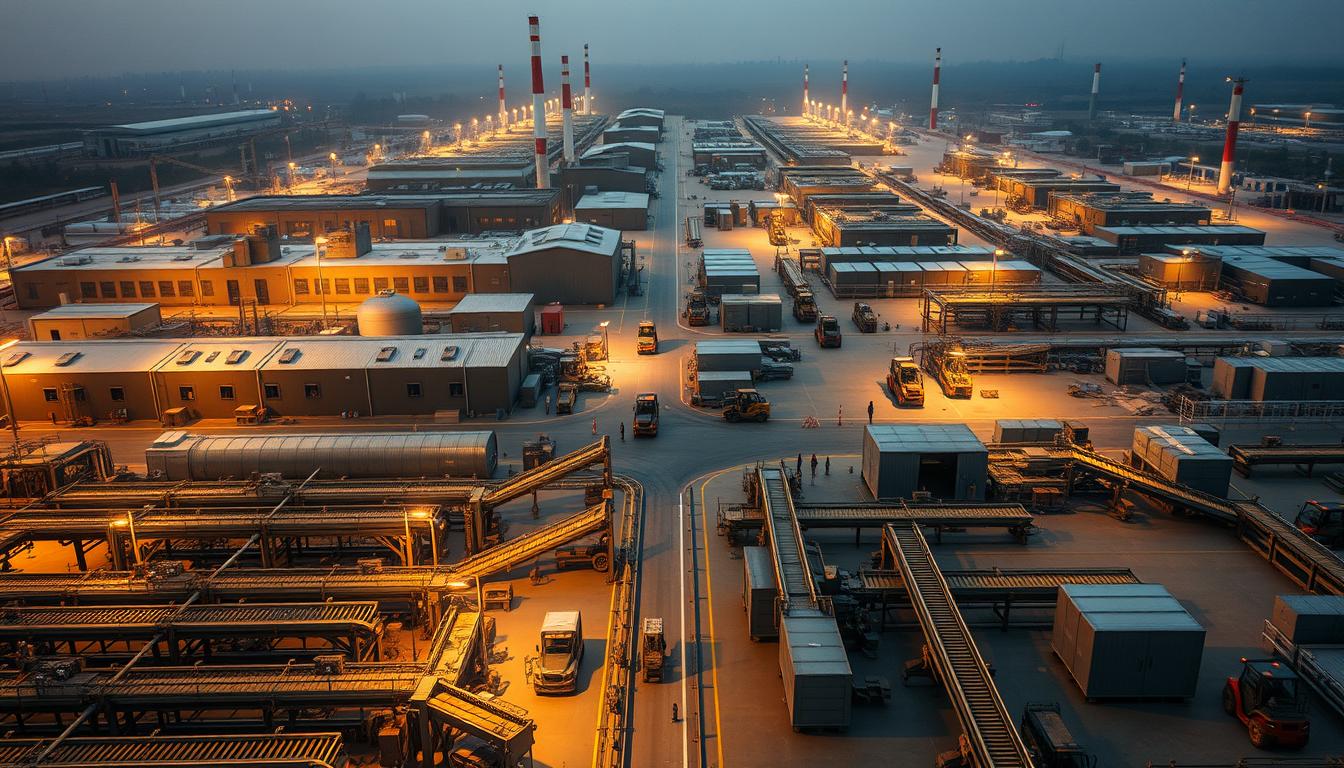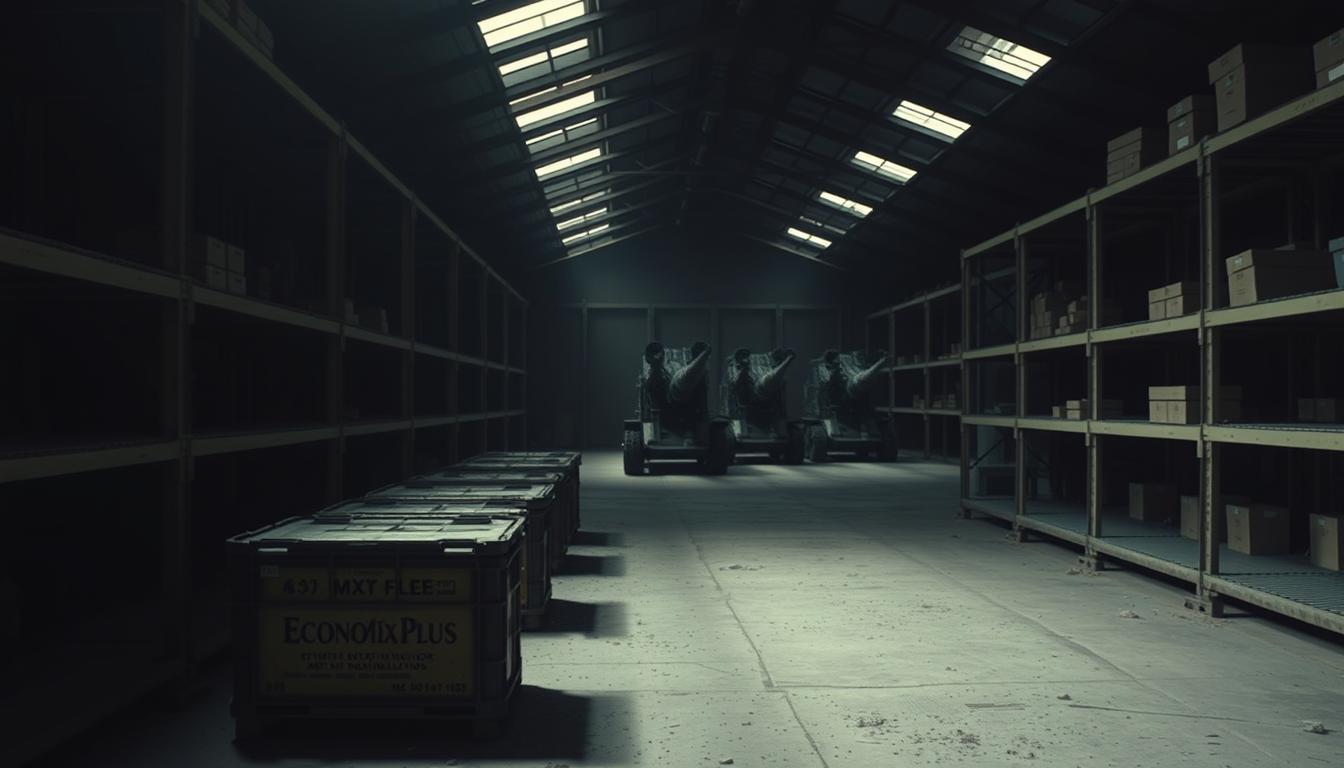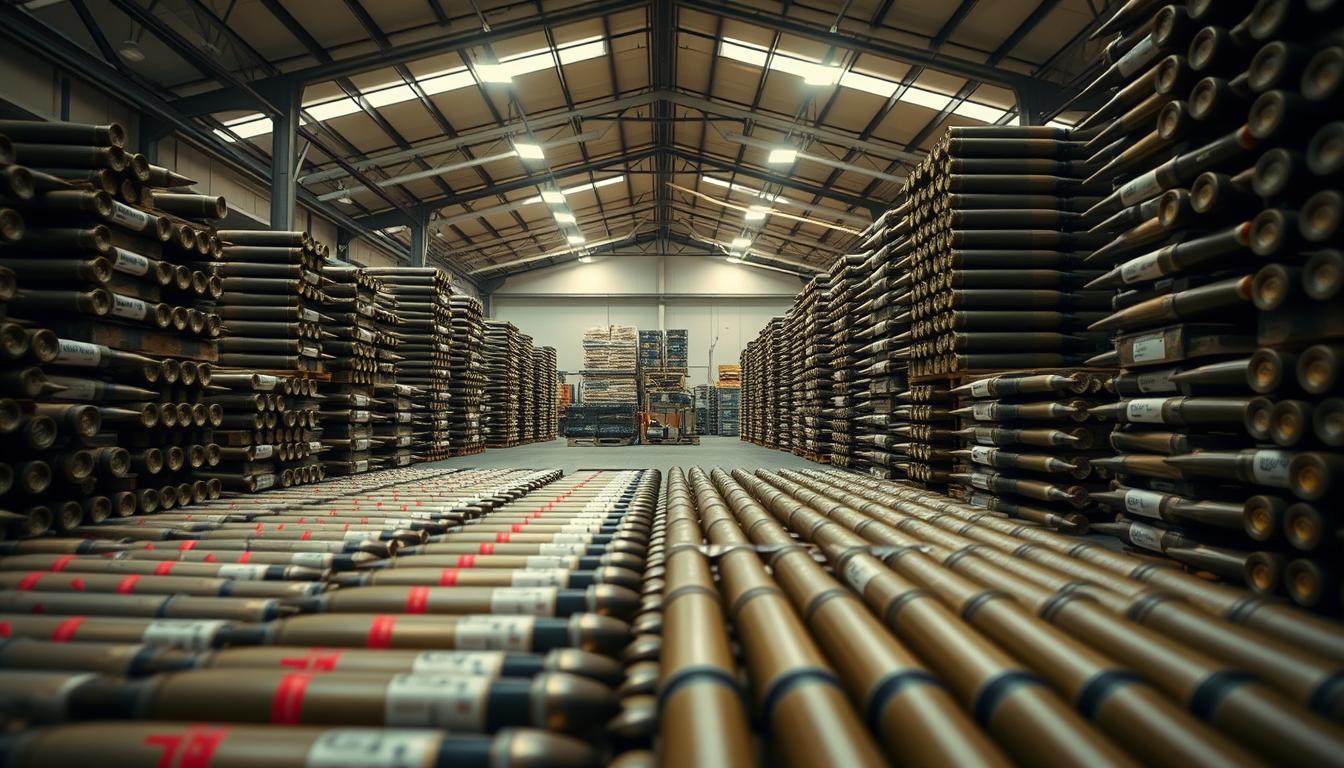Artillery stockpiles are the backbone of modern warfare. Yet, one country’s ability to sustain combat operations now hangs in the balance. Recent reports reveal a staggering depletion of critical supplies, raising urgent questions about strategic preparedness. How did exports of defense resources undermine domestic security—and what does this mean for regional stability?
Data indicates that high-intensity conflicts could be limited to just four days due to insufficient reserves. This alarming gap stems from prioritizing international arms sales over maintaining homefront readiness. Economic pressures further strain production, leaving defense planners scrambling to address vulnerabilities.
The situation highlights a paradox: global partnerships meant to strengthen influence may have weakened core defenses. With geopolitical tensions rising, the stakes extend beyond immediate military capacity. Supply chain gaps now threaten long-term strategic goals, reshaping alliances and risk calculations.
Key Takeaways
- Artillery shortages restrict combat operations to a four-day window in high-intensity scenarios.
- Arms exports have significantly reduced domestic ammunition reserves.
- Economic challenges hinder efforts to replenish critical defense stockpiles.
- Current constraints impact regional security strategies and alliance dynamics.
- Geopolitical instability amplifies risks tied to diminished readiness.
Overview of Pakistan’s Ammo Industry and Military Readiness
A country’s combat readiness hinges not just on strategy but on the robustness of its logistical frameworks. For decades, state-run facilities like Pakistan Ordnance Factories have shaped defense capabilities through large-scale manufacturing. Established after independence, these centers initially focused on basic small arms but expanded into artillery systems by the 1980s.
Historical Background of Ammunition Production
Post-1947 conflicts drove rapid industrialization of defense infrastructure. The ordnance factories network grew to over 20 sites, producing everything from bullets to tank shells. Aging machinery and inconsistent funding, however, limited modernization. By the 2000s, production rates struggled to match regional peers despite decades of experience.
Current Stockpile and Operational Concerns
Recent assessments reveal stockpiles for high-intensity operations now cover less than a week of sustained combat. A 2023 audit showed a 40% drop in reserves for key artillery ammunition types compared to 2018 levels. Export contracts to meet global demand diverted resources, leaving domestic inventories depleted during border tensions.
Legacy manufacturing methods further complicate efforts. While newer facilities adopt automated systems, 65% of production lines still rely on manual processes from the 1990s. This gap creates bottlenecks when scaling output for emergencies.
Geopolitical Context and Strategic Military Implications
Global defense strategies increasingly depend on balancing regional rivalries with international partnerships. Shifting alliances and resource allocation decisions now directly affect tactical preparedness. In South Asia, unresolved territorial disputes and arms deals with global players create a volatile mix.
Regional Power Dynamics and Tensions
Ongoing friction with New Delhi remains a critical factor in strategic planning. Over 150 ceasefire violations occurred along the Line of Control in 2023 alone, according to sources monitoring border activities. Former Army Chief General Qamar Javed Bajwa noted,
“Regional stability requires proportional responses to emerging threats.”
Impact of International Arms Deals
Exports to conflict zones like Ukraine have strained domestic reserves. A 2023 report revealed that 18% of artillery rounds produced locally were diverted to fulfill recent arms contracts. This trade-off creates dual pressures: maintaining global influence while securing homefront needs.
| Export Destination | Artillery Units (2022) | Domestic Stock Impact |
|---|---|---|
| Ukraine | 12,000 | -14% reserves |
| Middle East | 8,500 | -9% reserves |
| Africa | 5,200 | -6% reserves |
Military leadership faces tough choices between economic gains and operational readiness. Partnerships with China and Turkey aim to offset deficits through technology transfers. However, production bottlenecks persist, foreshadowing challenges explored in the next section.
Pakistan Ordnance Factories: Capabilities and Constraints
Behind every military’s operational readiness lies the often-overlooked reality of production lines. The state-run ordnance network, established decades ago, now grapples with maintaining relevance in modern warfare. While producing 70% of domestically used munitions, its infrastructure shows signs of strain under evolving demands.
Outdated Production Facilities
Over 60% of machinery in key factories dates to the 1980s, according to a 2023 Defense Review. Manual assembly processes dominate critical stages of artillery shell manufacturing. This limits daily output to 1,200 units – half the rate of automated facilities in allied nations.

Self-propelled howitzer systems require precision components that aging equipment struggles to produce. A recent incident saw 30% of armored vehicle rounds fail quality tests due to calibration errors in outdated presses.
Rising Global Demand and Supply Issues
Export commitments have intensified pressure on limited capacity. Data reveals:
| Munition Type | 2022 Production | Export Share |
|---|---|---|
| 122mm Rockets | 18,000 units | 63% |
| 155mm Shells | 24,500 units | 41% |
| Small Arms Ammo | 92 million rounds | 55% |
The Global Security Monitor reports 122 rockets shipments increased 140% since 2020. This surge left domestic reserves at 37% of recommended levels during peak border tensions last year.
Modernization efforts face hurdles. While new Turkish-assisted lines can produce 500 rocket motors weekly, they account for just 15% of total capacity. The gap between emerging needs and industrial capabilities continues widening, creating strategic vulnerabilities.
Impact of Ammunition Shortages on Military Readiness
Modern militaries measure strength not just in troops but in rounds ready to fire. Current deficits in critical munitions have created a precarious scenario where sustained combat operations face severe limitations. A 2023 assessment revealed that reserves for key artillery systems could sustain high-intensity engagements for only 96 hours before depletion – a threshold that reshapes strategic calculations.

Critical Artillery Ammunition Deficits
Shortfalls in 155mm shells and rocket systems now exceed 60% of recommended stockpile levels. These munitions form the backbone of modern artillery units, enabling precision strikes and area denial tactics. Without adequate reserves, ground forces lose their primary method of suppressing enemy advances or securing territorial gains.
Operational Vulnerabilities and the Four-Day Conflict Window
The four-day sustainability window exposes critical gaps in wartime logistics. During recent simulations, units exhausted guided missile stocks within 72 hours, forcing commanders to ration firepower. One senior officer noted at a security conference:
“We’re trading rounds for time – a dangerous equation when every minute counts.”
This constraint forces rapid escalation decisions rather than measured responses. Insufficient war reserves also undermine deterrence strategies, as adversaries may perceive shorter conflict timelines as exploitable weaknesses. Combined with regional tensions, these deficits amplify risks beyond immediate battlefields into diplomatic and economic spheres.
Economic Factors and Military Supply Challenges
Economic turbulence now shapes defense capabilities as much as battlefield tactics. A 40% debt-to-GDP ratio and 35% inflation rate strain budgets, forcing cuts to munitions production. This fiscal crisis has slashed artillery shell manufacturing funds by 18% since 2022, according to IMF reports.

Rising global demand compounds local shortages. Over 22% of current output gets diverted to fulfill international contracts, leaving domestic stockpiles at 53% of strategic targets. A defense ministry official stated:
“Every exported shell weakens our operational buffer – but we need the foreign currency.”
The government faces impossible trade-offs. Allocating $1.2 billion to upgrade ordnance factories would require cutting social programs by 9%. Meanwhile, supply chains falter as raw material costs jump 140% for copper and steel since 2021.
Traditional savings mechanisms remain irrelevant here. Solutions require structural reforms, not short-term financial instruments. These economic pressures set the stage for urgent policy responses explored next.
Military Leadership and Policy Responses
Command structures face unprecedented tests when material shortages collide with strategic imperatives. Recent policy shifts reveal a military establishment recalibrating priorities amid dwindling reserves and evolving threats.

Strategic Doctrine and Policy Adjustments
The Pakistan military doctrine traditionally emphasized mass mobilization and territorial defense. Former Army Chief General Qamar Javed Bajwa acknowledged this approach requires modernization, stating at the 2022 National Security Workshop:
“Doctrinal agility determines survival in modern warfare. We’re reorienting from quantity-based stockpiling to smart logistics partnerships.”
Leadership attempts to address critical gaps include:
| Policy Area | Action Taken | Impact |
|---|---|---|
| Procurement | 15% budget shift to domestic production | +8% monthly shell output |
| Stockpile Management | Tri-service coordination framework | 12% reduction in waste |
| Technology | Drone-based delivery systems trial | 23% faster resupply |
These reforms aim to extend the four-day combat threshold identified in recent assessments. However, production bottlenecks persist – automated factories meet only 32% of rocket casing demands.
The current army chief has prioritized joint ventures with allied nations to bypass legacy infrastructure limits. While these attempts show progress, they face scrutiny over technology transfer delays and training gaps.
Pakistan’s Ammo Industry and Military Readiness in the Current Geopolitical Climate
Global conflict hotspots now dictate defense priorities as nations recalibrate security postures. Rising demand for advanced arms collides with domestic stockpile management challenges, creating complex trade-offs between influence and readiness.
Defense Preparedness amid International Crises
Export commitments have reduced critical ammunition reserves to 47% of strategic targets, according sources familiar with 2024 inventory audits. This deficit emerges as 22% of 155mm artillery shells get diverted to fulfill foreign contracts monthly. Key impacts include:
| Exported System | Units (2023) | Domestic Capacity Loss |
|---|---|---|
| 122mm Rockets | 14,200 | 18% |
| Precision Guidance Kits | 3,800 | 29% |
| Small Arms Ammo | 64M rounds | 12% |
A defense analyst noted at the Munich Security Conference:
“Export-driven production models risk turning national arsenals into profit centers rather than security guarantees.”
Implications for Regional Security
Modern systems like drone-swarm countermeasures now consume 34% of R&D budgets, reflecting shifted priorities. Social media amplifies this dynamic – viral videos of prototype rockets often precede official capability announcements, altering deterrence calculations.
New Delhi recently doubled its artillery procurement budgets, citing “asymmetric threats” in public statements. This escalation pressures neighboring states to accelerate their modernization timelines despite production constraints.
Long-term planning now prioritizes automated manufacturing capabilities over manual processes. Joint ventures aim to bridge gaps – a Turkish-assisted facility recently achieved 78% defect-free rocket motor output. Yet supply chain vulnerabilities persist, particularly in semiconductor-dependent targeting systems.
Conclusion
The four-day combat threshold exposes a critical vulnerability in modern defense planning. With ammunition reserves at 47% of strategic targets, sustained conflict risks rapid depletion of essential artillery stocks. Economic pressures and export commitments have created a perfect storm – every shipped shell weakens domestic readiness while foreign currency demands persist.
Military leadership’s attempts to modernize production face hurdles. Aging infrastructure limits output, and geopolitical tensions with neighbors escalate risks. Recent arms deals, though economically vital, further strain war reserves needed for border security.
This crisis extends beyond battlefields. Social media amplifies public scrutiny of defense capabilities, while search trends reveal unexpected associations – queries mixing terms like “Kamal Haasan” with artillery shortages highlight the chaotic nature of modern information ecosystems.
Urgent reforms must reconcile export-driven revenue with homefront security needs. Without addressing production bottlenecks and policy gaps, the four-day window could shrink further, reshaping regional power dynamics irreversibly.













